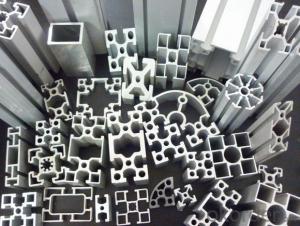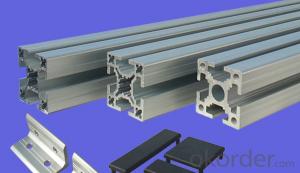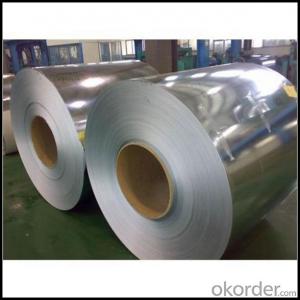Aluminium Profile for Marine Ship Deck Making
- Loading Port:
- Shanghai
- Payment Terms:
- TT OR LC
- Min Order Qty:
- 5 m.t.
- Supply Capability:
- 1000 m.t./month
OKorder Service Pledge
OKorder Financial Service
You Might Also Like
Item specifice
1. Structure of Aluminium Profile for Marine Ship Deck Making Description
Aluminium Profile for Marine Ship Deck Making is one semi-finished aluminium material. The alloy AA5083 T6 is widly used in building, industry ect. Its weight is much lower than steel. So many customers choosed aluminium material instead of steel.
2. Specification of Aluminium Profile for Marine Ship Deck Making
Aluminum Extrusion | |
Main Specification | |
Alloy | AA1xxx (AA1050, AA1060, AA1070, AA1100 etc.) |
AA3xxx (AA3003, AA3004, AA3005, AA3105 etc.) | |
AA5xxx, AA6XXX (AA5052,AA5083, AA5754, AA6061, AA6062 etc.) | |
AA8xxx(AA8011, AA8006 etc.) | |
Temper | H14,H16, H18, H22, H24, H26, H32,O/F, T4, T6, T651 |
Thickmess | 0.01mm-100mm |
Width | 30mm-1700mm |
Standard | GB/T 3880-2006/ASTM |
Special specification is available on customer's requirement | |
3. Application of Aluminium Profile for Marine Ship Deck Making
(1).Interior: wall cladding, ceilings, bathrooms, kitchens and balconies, shutters, doors...
(2).Exterior: wall cladding, facades, roofing, canopies, tunnels,column covers , renovations...
(3).Advertisement: display platforms, signboards, fascia, shop fronts...
4. Feature of Aluminium Profile for Marine Ship Deck Making
Surfact Quality :
Be free from Oil Stain, Dent, Inclusion, Scratches, Stain, Oxide Dicoloration, Breaks, Corrosion, Roll Marks, Dirt Streaks and other defect which will interfere with use,
Mechenical Property:
Chemical Composite and Mechanical Property
5. Certificate of Aluminium Profile for Marine Ship Deck Making
SGS and ROHS(if client request, paid by client), MTC(plant provided), Certificate of Origin(FORM A, FORM E, CO), Bureau Veritas and SGS (if client request, paid by client), CIQS certificate
6. Image of Aluminium Profile for Marine Ship Deck Making
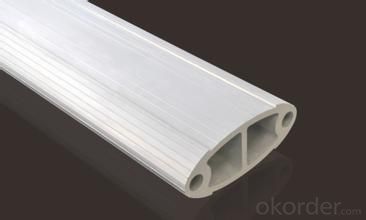
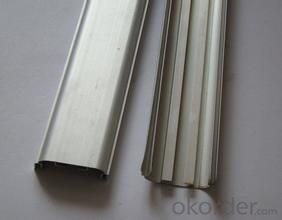
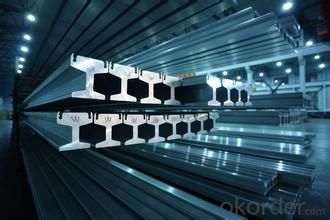
7. Package and shipping of Aluminium Profile for Marine Ship Deck Making
First, plastic cloth with drying agent inside; Second, Pearl Wool ; Third, wooden cases with dry agent , fumigation wooden pallets, aluminum surface could cover blue PVC film
8. FAQ
1) What is the delivery time?
Depends on actual order, around 20 to 35 days
2) What is the QC system:
We have QC staff of 20 persons and advanced equipment, each production is with MTC traced from Aluminum ingot lot.
3) What market do you mainly sell to?
Australia, America, Asia, Middle East, Western Europe, Africa etc
- Q:Can aluminum profiles be used in the construction of greenhouses?
- Yes, aluminum profiles can be used in the construction of greenhouses. Aluminum is a popular choice for greenhouse framing due to its durability, lightweight nature, and resistance to corrosion. It offers structural strength while allowing for maximum light transmission, which is essential for plant growth. Additionally, aluminum profiles are easy to assemble and maintain, making them an ideal material for constructing greenhouses.
- Q:Are aluminum profiles suitable for interior design applications?
- Yes, aluminum profiles are suitable for interior design applications. Aluminum is a versatile material that offers many benefits for interior design purposes. Firstly, aluminum profiles are lightweight yet strong, making them easy to work with and install. This allows for flexibility in design and enables the creation of intricate shapes and structures. Secondly, aluminum is highly durable and resistant to rust and corrosion. This makes it suitable for use in various interior design applications, including door frames, window frames, partitions, cabinets, and furniture. Aluminum profiles can withstand wear and tear, ensuring longevity and minimal maintenance requirements. Additionally, aluminum profiles can be customized and finished in various ways. They can be powder-coated or anodized to achieve different colors and textures, allowing for design versatility and the creation of unique and aesthetically pleasing interiors. Furthermore, aluminum is a sustainable and environmentally friendly material. It is highly recyclable, and its production requires significantly less energy compared to other metals. This makes it a sustainable choice for interior design applications, aligning with the growing trend of eco-conscious design. In conclusion, aluminum profiles are indeed suitable for interior design applications. Their lightweight, durability, customization options, and sustainability make them an ideal choice for creating functional and visually appealing interiors.
- Q:What are the advantages and disadvantages of the use of magnesium profiles compared with aluminum profiles?
- 5 specific gravity density: under the same volume conditions, magnesium alloy is lighter than aluminum alloy, which is the advantage of magnesium alloy.6 modulus of elasticity: the frame made of magnesium alloy is more rigid than aluminum alloy frame, and the frame made of the same thickness and caliber can absorb more trampling force when riding, which will influence riding efficiency.
- Q:What are the load-bearing capacities of different aluminum profile shapes?
- The load-bearing capacities of various aluminum profile shapes differ depending on several factors, including the specific aluminum alloy used, the profile's size and dimensions, and its intended application. Aluminum profiles, also referred to as extrusions, are available in a wide range of shapes, which include I-beams, T-beams, square tubes, rectangular tubes, angles, and channels. Each shape possesses a distinct load-bearing capacity due to its structural design and cross-sectional properties. For instance, I-beams exhibit a high load-bearing capacity due to their shape, enabling efficient distribution of weight along the flanges. These profiles are commonly employed in structural applications that require supporting heavy loads. T-beams, on the other hand, possess a load-bearing capacity akin to I-beams but feature a different cross-sectional shape. They find utility in applications necessitating a flat surface on one side, such as in the construction or automotive industries. Square and rectangular tubes are versatile profiles widely used in building structures, frames, and support systems. Their load-bearing capacity is contingent upon the tube's wall thickness and size. Angles and channels, characterized by their L-shaped and U-shaped cross-sections respectively, are commonly employed in the construction and manufacturing sectors. The load-bearing capacity of these profiles is influenced by their size and dimensions. It is important to note that manufacturers typically provide the load-bearing capacities of aluminum profiles, which should be consulted for specific applications. Moreover, engineering calculations and considerations, such as deflection, bending moments, and safety factors, should be taken into account when determining the appropriate aluminum profile shape and size for a given load-bearing requirement.
- Q:What are the differences between the 6005 and 6003 aluminum profiles?Yangmingxg3
- 6003 of the magnesium content is higher than 6005, and the strengthening of magnesium to aluminum is remarkable. With the addition of 1% mg, the tensile strength increases by about 34MPa.
- Q:How are aluminum profiles cut and shaped?
- Aluminum profiles are cut and shaped using various methods such as sawing, milling, drilling, and bending. Sawing is the most common method, where a circular saw or bandsaw is used to cut the aluminum profiles to the desired length. Milling involves removing excess material using a rotating cutting tool to create specific shapes and designs. Drilling is used to create holes in the profiles using a drill bit. Lastly, bending is employed to shape the profiles by applying force to bend them into the desired angles or curves.
- Q:Are aluminum profiles suitable for modular office systems?
- Yes, aluminum profiles are suitable for modular office systems. Aluminum profiles are lightweight, durable, and have excellent structural integrity, making them ideal for constructing modular office systems. They are easy to assemble, disassemble, and reconfigure, allowing for flexibility and adaptability in office layouts. Additionally, aluminum profiles can be customized to meet specific design requirements, offering a sleek and modern aesthetic to modular office systems.
- Q:What are the different machining techniques for aluminum profiles?
- Some of the different machining techniques for aluminum profiles include milling, drilling, turning, and sawing. These techniques are used to shape, cut, and create various features on aluminum profiles, such as holes, slots, chamfers, and intricate designs. Additionally, other techniques like grinding, polishing, and sanding may be employed to achieve the desired surface finish on the aluminum profiles.
- Q:Can aluminum profiles be used in the manufacturing of furniture?
- Yes, aluminum profiles can be used in the manufacturing of furniture. Aluminum is a versatile and lightweight material that offers several advantages for furniture production. It is highly durable, resistant to corrosion, and has a high strength-to-weight ratio. These properties make it suitable for various furniture applications, including chairs, tables, shelving units, and frames. Additionally, aluminum profiles can be easily customized, allowing for the creation of unique and modern designs. The use of aluminum in furniture manufacturing also contributes to sustainability, as it is a recyclable material. Overall, aluminum profiles provide designers and manufacturers with flexibility and durability, making them a popular choice in the furniture industry.
- Q:What are the different anodizing colors available for aluminum profiles?
- There are several different anodizing colors available for aluminum profiles, including clear, black, bronze, gold, and champagne.
1. Manufacturer Overview |
|
|---|---|
| Location | |
| Year Established | |
| Annual Output Value | |
| Main Markets | |
| Company Certifications | |
2. Manufacturer Certificates |
|
|---|---|
| a) Certification Name | |
| Range | |
| Reference | |
| Validity Period | |
3. Manufacturer Capability |
|
|---|---|
| a)Trade Capacity | |
| Nearest Port | |
| Export Percentage | |
| No.of Employees in Trade Department | |
| Language Spoken: | |
| b)Factory Information | |
| Factory Size: | |
| No. of Production Lines | |
| Contract Manufacturing | |
| Product Price Range | |
Send your message to us
Aluminium Profile for Marine Ship Deck Making
- Loading Port:
- Shanghai
- Payment Terms:
- TT OR LC
- Min Order Qty:
- 5 m.t.
- Supply Capability:
- 1000 m.t./month
OKorder Service Pledge
OKorder Financial Service
Similar products
New products
Hot products
Hot Searches
Related keywords
